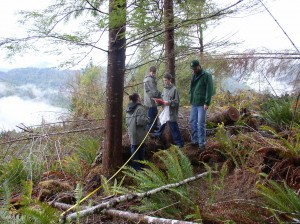There has never been a time when it is so clear that typical instruction wedded to textbooks and teacher lesson plans and characterized by discipline-bound classes throughout the school day must be changed. These conditions do not improve learning — they inhibit it.
Place-based education makes science, social studies, mathematics, reading, and the humanities more interesting. By integrating place into the school curriculum, learning can be seen as important for daily living: it deals with issues, enables students to participate in societal decisions, and can be related to economic improvement. Place-based education provides a real-world context that is missing from a prescribed curriculum, (i.e., strict adherence to a textbook, the recall of information or replication of specific skills that provide the instructional and assessment focus for 95 percent of typical instruction in most classrooms).
Many national standards reports are emphasizing goals that relate the core curriculum courses to life outside of school. For example, the four goals for science included in the National Science Education Standards call for developing students who:
1. experience the richness and excitement of knowing about and understanding the natural world;
2. use appropriate scientific processes and principles in making personal decisions;
3. engage intelligently in public discourse and debate about matters of scientific and technological concern; and
4. increase their economic productivity through the use of the knowledge, understanding, and skills of the scientifically literate person in their careers.
Place-based education emphasizes and provides the needed context for learning. It is not enough to organize the concepts and processes that tend to define the disciplines. It is the situation (i.e., real experiences, environmental problems, local issues) that invite mind engagement — the other missing ingredients in typical school/classroom-based programs.
Many recognize the necessity of stimulating a student’s mind beyond memorization if real learning is to result. The following situations illustrate context and the way pace-based education tends to succeed in capturing the interest and the minds of students.
1. Students must help define the content, often by asking questions.
2. Students must be given time to wonder and to find interesting pursuits.
3. Topics often have “strange” features that evoke questions.
4. Teachers encourage and request different views and forms of expression.
5. The richest activities are “invented” by teachers and students.
6. Students create original and public products that enable them to be “experts.”
7. Students take some action as a result of their study and their learning.
8. Students sense that the results of their work are not predetermined or fully predictable (Perrone, 1994).
Rural schools can and should take the lead to integrate place-based education within school curricula. Rural schools have an advantage in that they are generally smaller, closer to nature, less bureaucratic and therefore, can be more flexible in terms of new learning models that engage students. Local contexts can enliven the school program and succeed with mind engagement of students, both of which rarely occur in school-based learning. Dealing with real problems in a local context in a rural school could provide the needed model to change the focus of education to show that place-based learning can make a real difference in students’ education and in their lives.
Robert Yager is a professor of curriculum and instruction at the University of Iowa.
Reference
Perrone, V. (1994). How to engage students in learning. Educational Leadership, 51 (5), 11-13.


